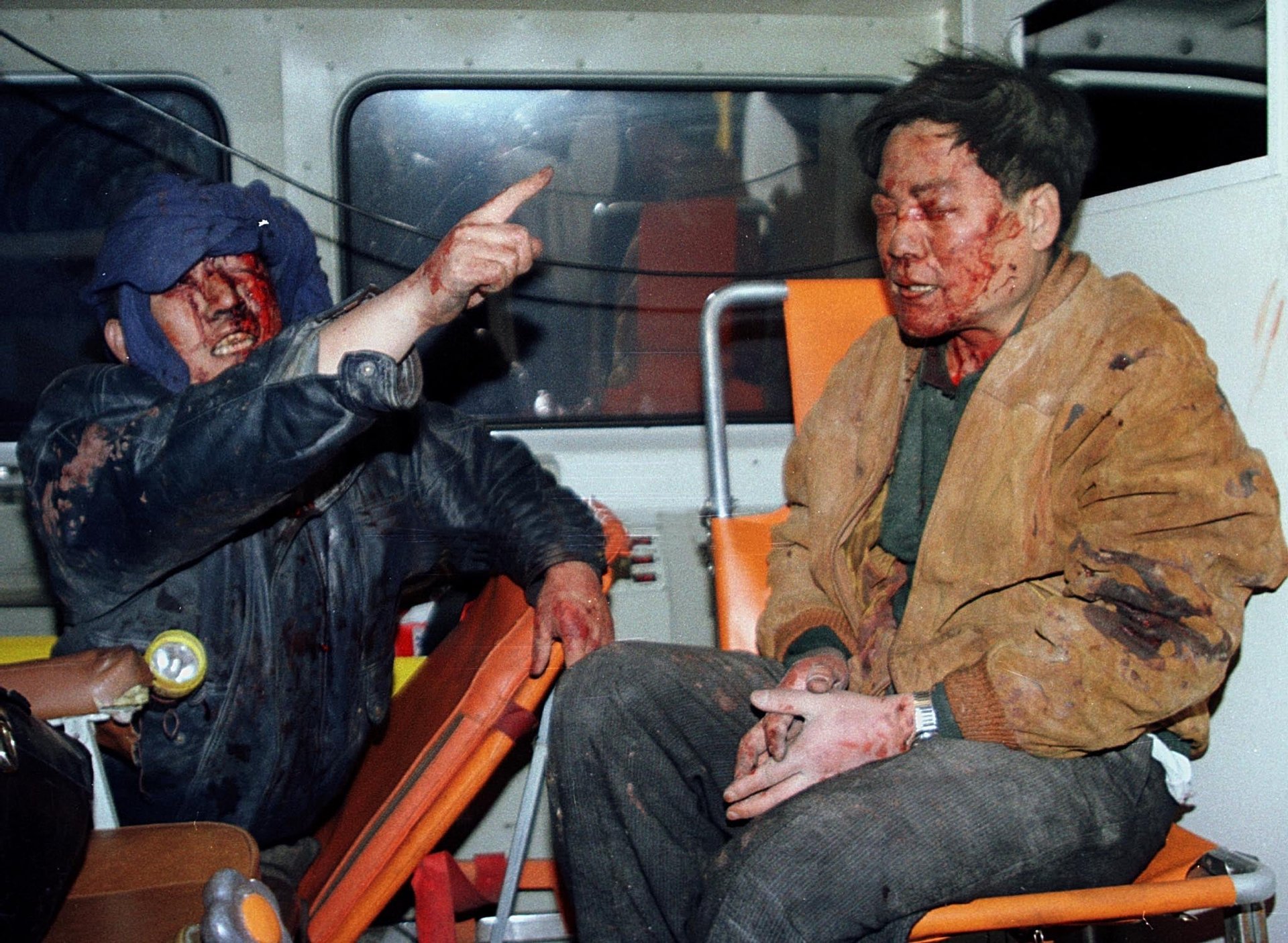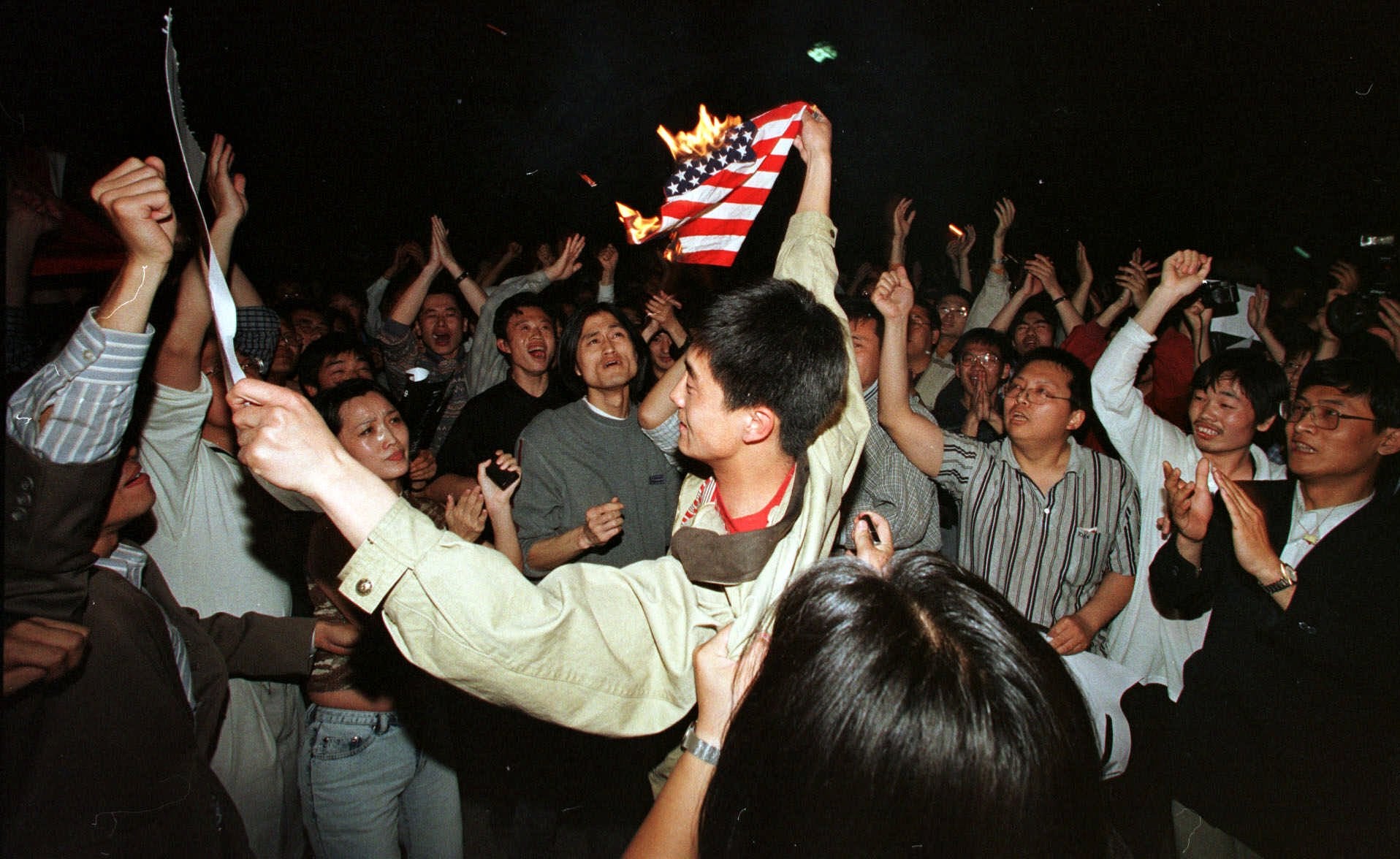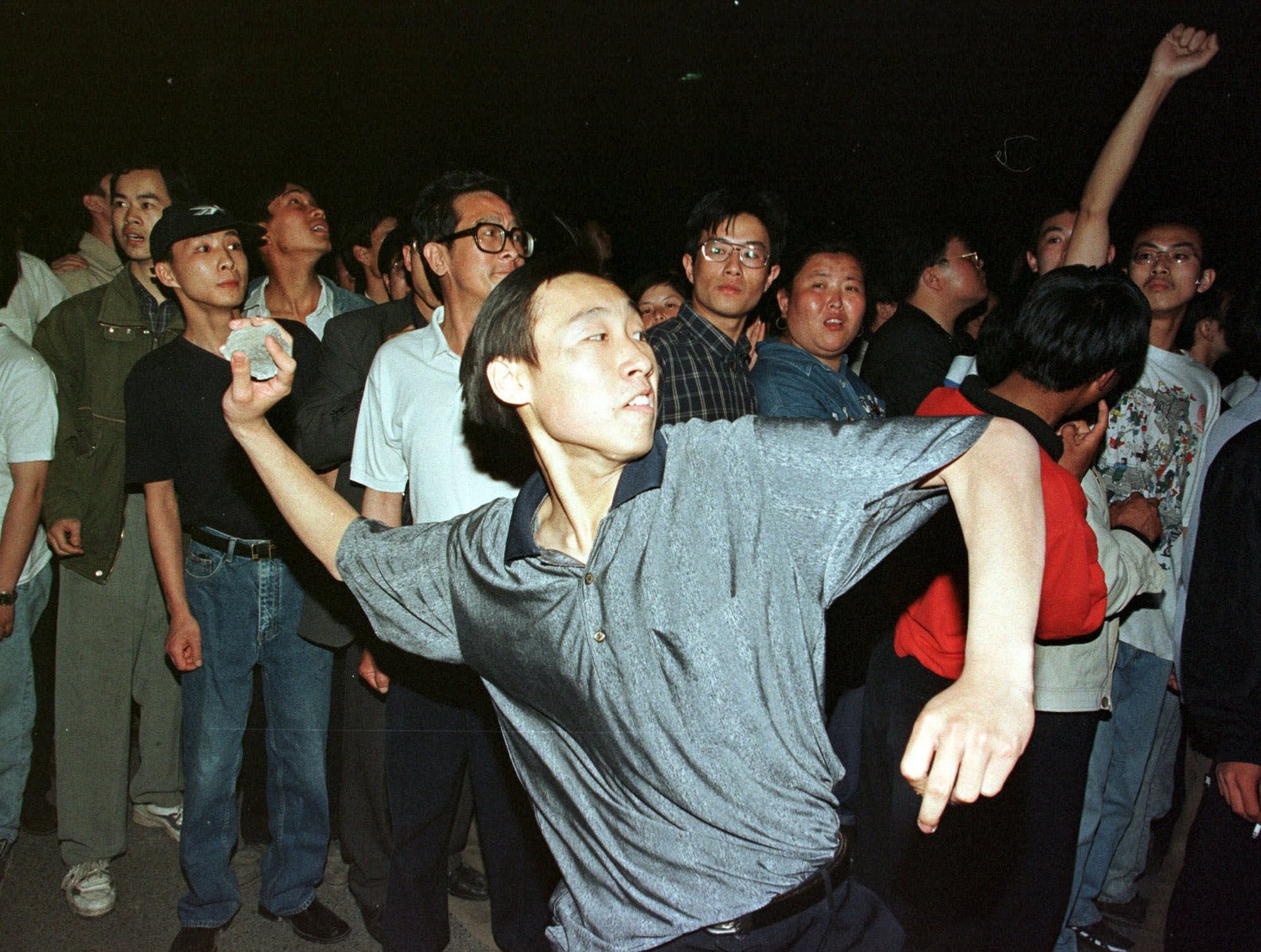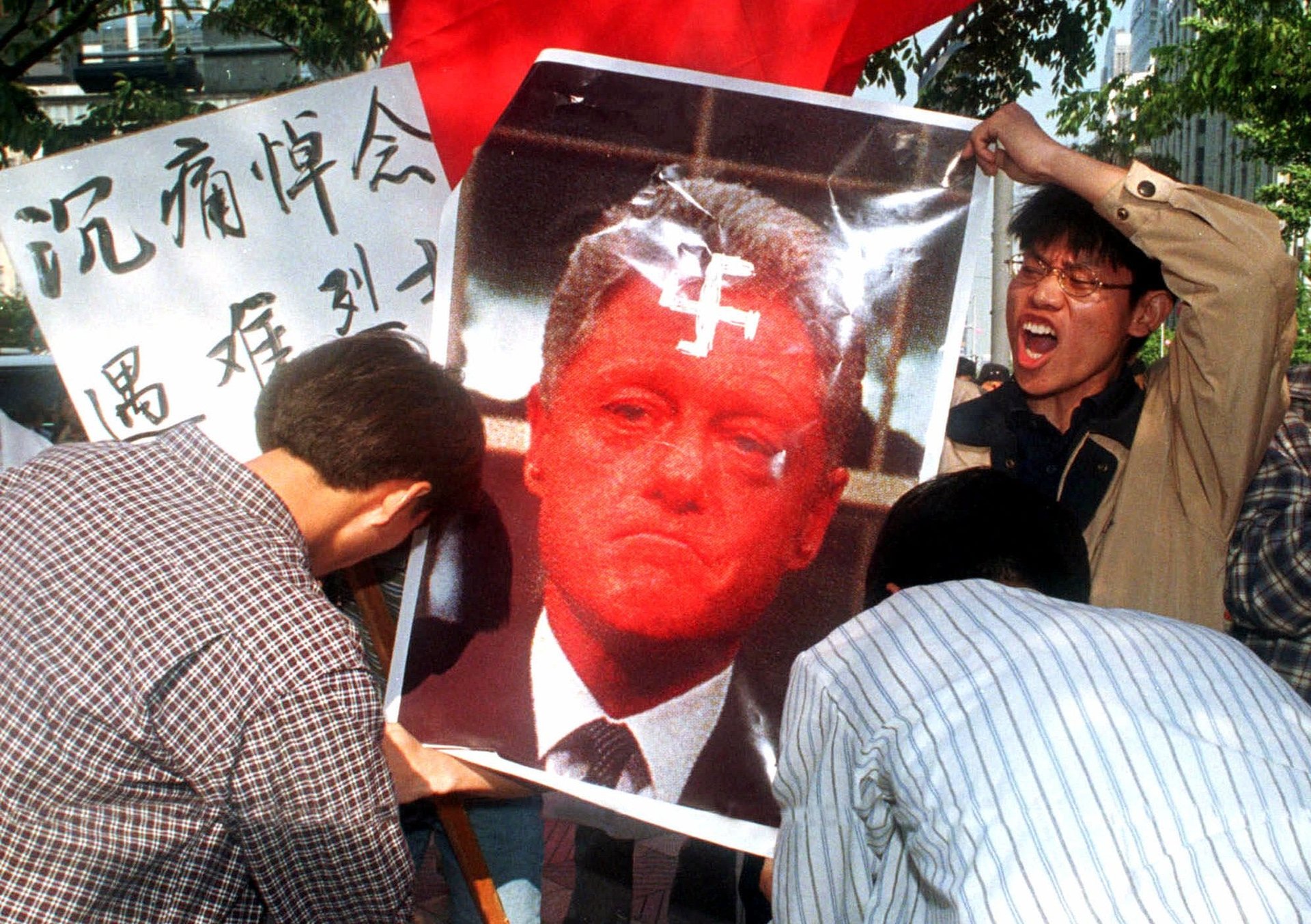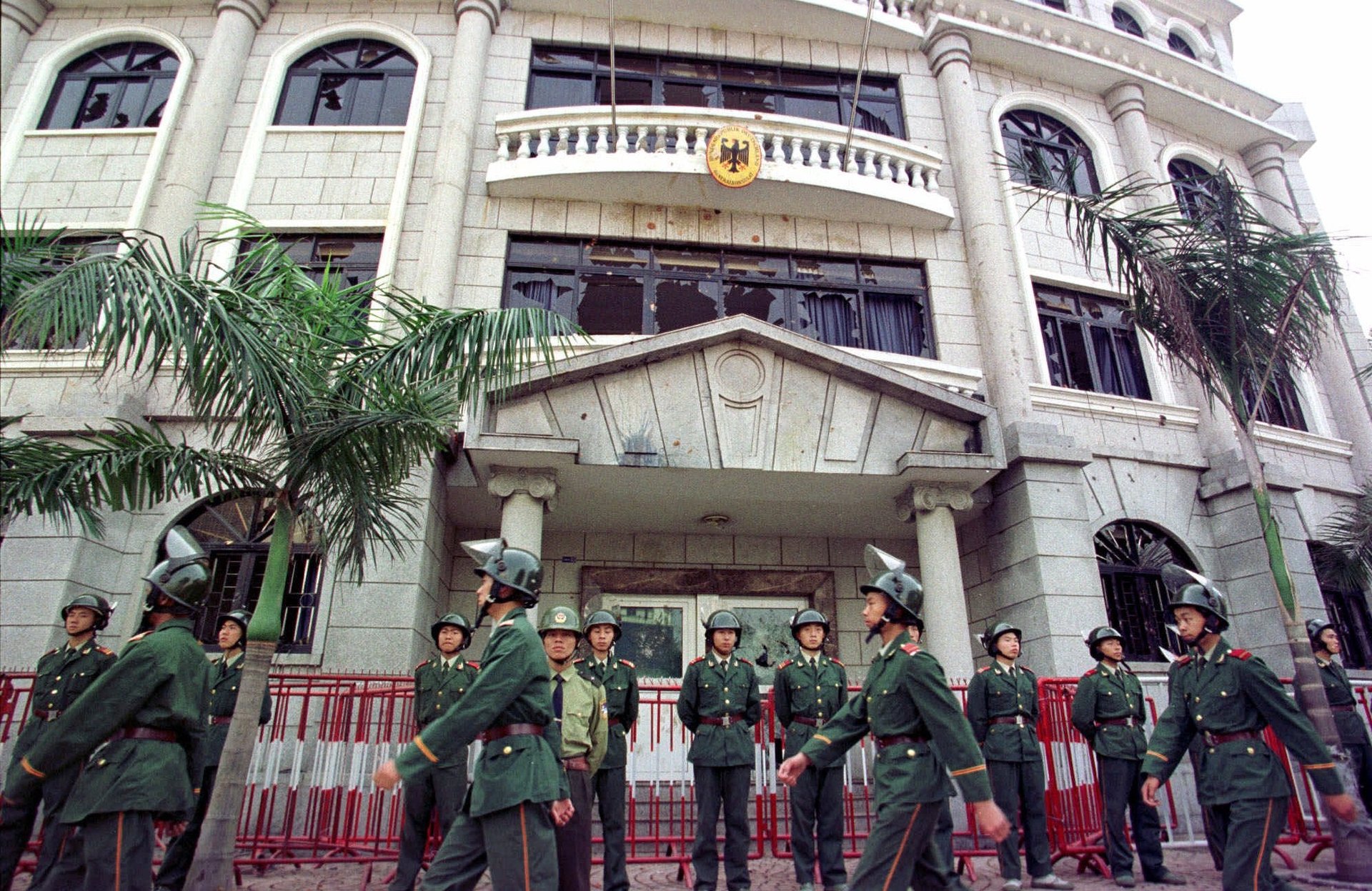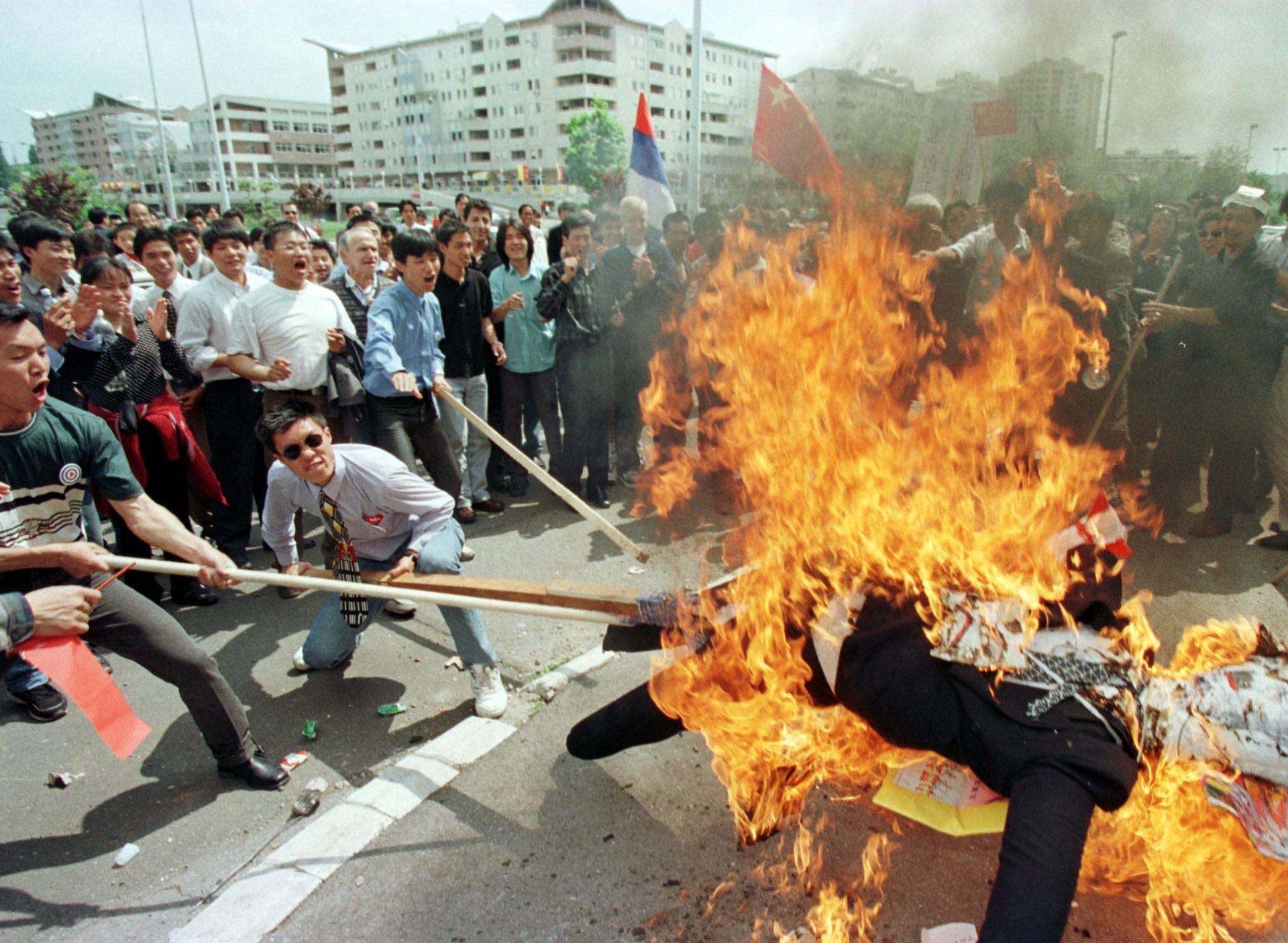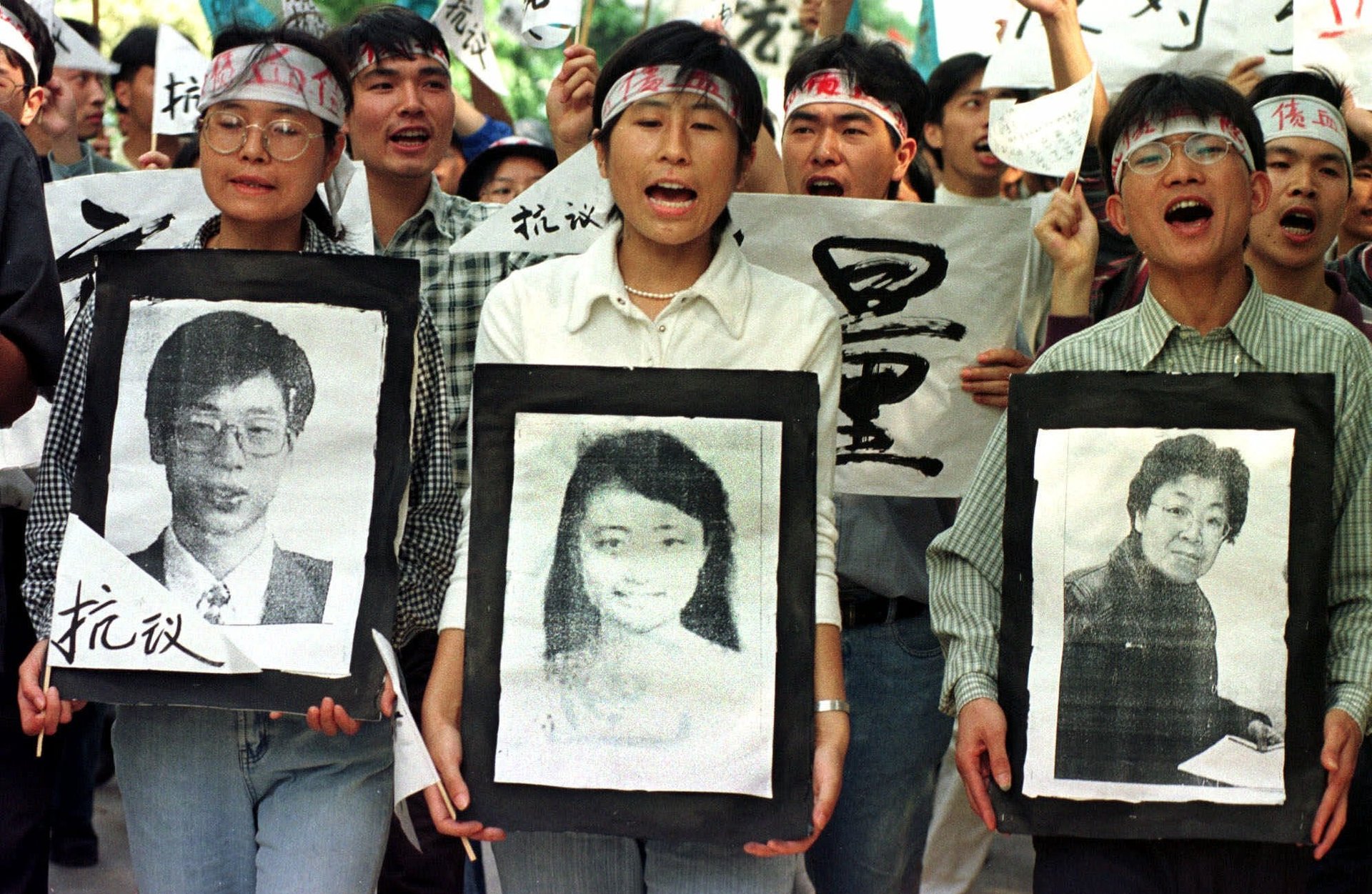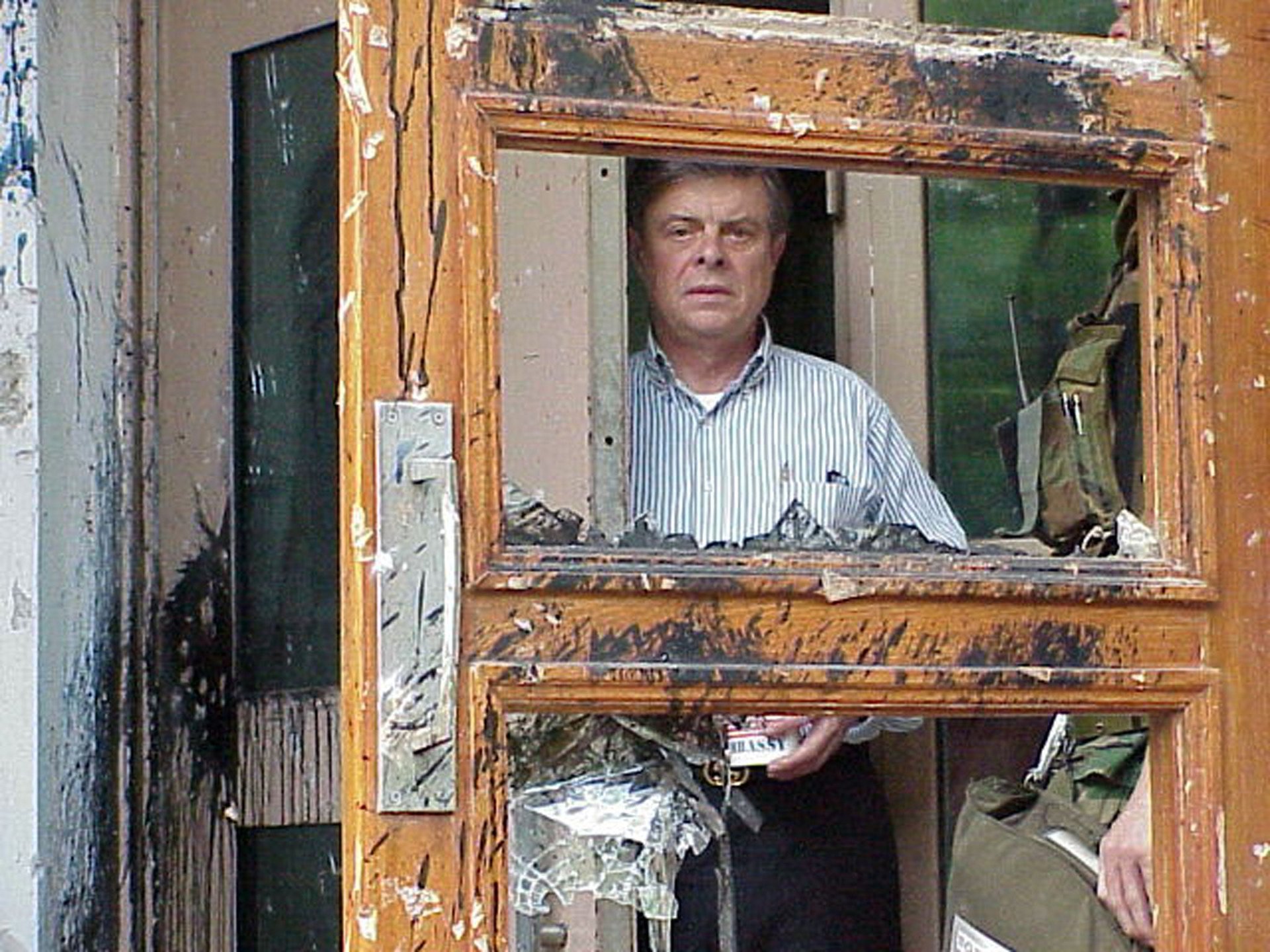Photos: How China erupted into anti-American rage 20 years ago
A spring weekend two decades ago in China took a violent and angry turn as protesters in cities across the country—and around the world—erupted into anti-American rage.
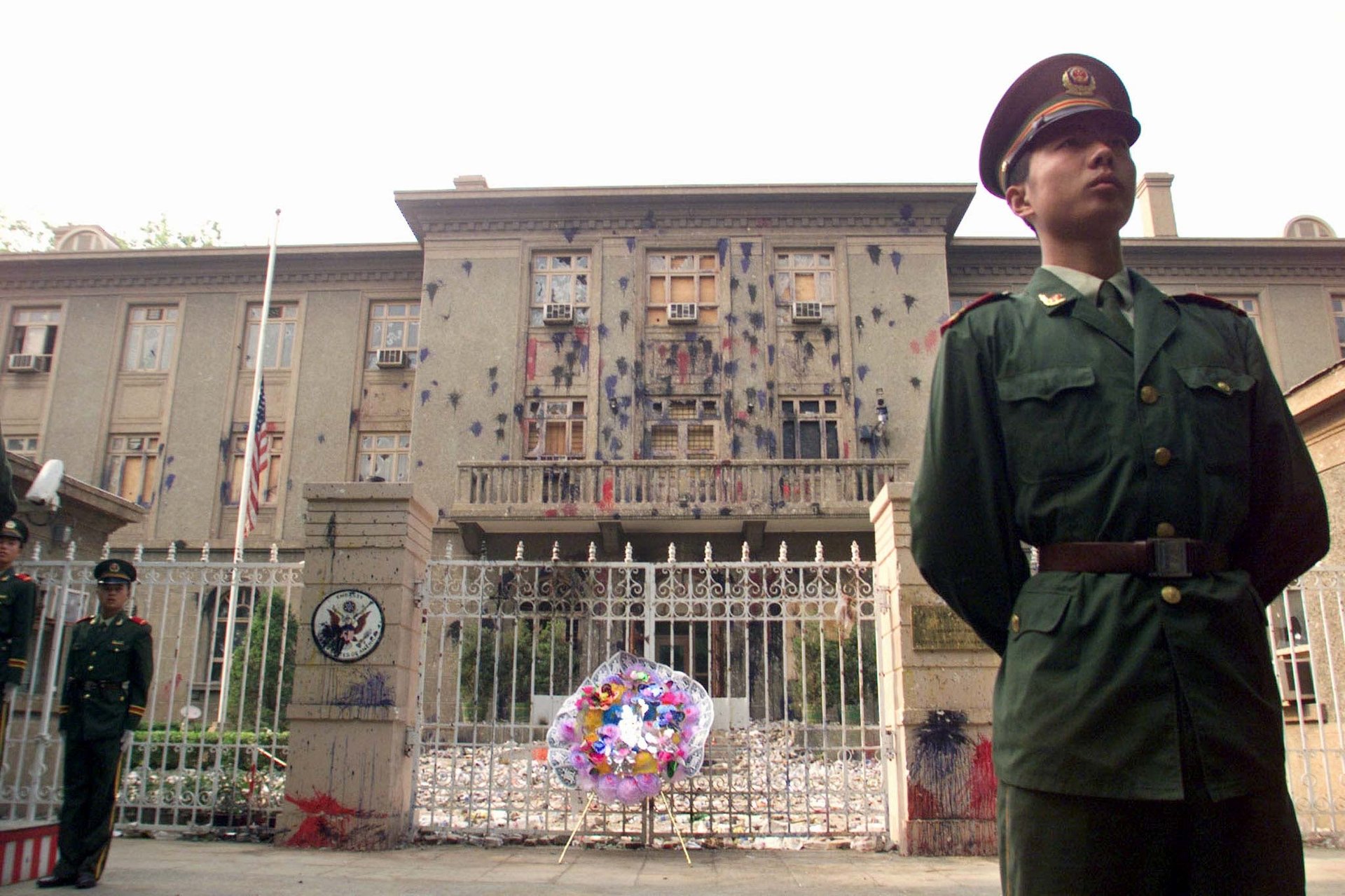

A spring weekend two decades ago in China took a violent and angry turn as protesters in cities across the country—and around the world—erupted into anti-American rage.
The cause of their fury: the American bombing of the Chinese embassy in former Yugoslav capital Belgrade just before midnight on May 7, 1999, killing three Chinese journalists and injuring about 20 others. The strike was carried out by US warplanes as part of a NATO operation, though the US has maintained that it was an accident, having mistaken the embassy for a weapons depot (paywall).
In Beijing, tens of thousands of furious demonstrators pelted the American embassy with anything they could lay their hands on: eggs, stones, bricks, chunks of concrete, firecrackers, even paint balloons. They laid siege to the building, trapping the US ambassador (paywall) Jim Sasser inside for several days as he holed up with security personnel and subsisted on ready-to-eat Marine meals. Protesters also threw bricks and rocks at the British embassy. The Irish Republic’s embassy, located next to the US compound, was targeted as well, even though Ireland is not a NATO member.
Throughout the weekend, busloads of students descended on the embassy district, marching with signs (paywall) like “Blood for blood” and chanting slogans like “American killers.” Some burned American flags as a roaring crowd cheered them on. Others waved American flags marked with tiny swastikas instead of stars.
Elsewhere in China, protesters targeted American consulates. In Chengdu, the US consul’s residence was set on fire. The protests extended to cities around the world including Seoul and Berlin.
The Chinese government, usually wary of social disturbances, actively approved and encouraged the demonstrations. The protests, vice president Hu Jintao declared, “fully reflect the Chinese people’s great fury at the atrocity of the embassy attacks by NATO and the Chinese people’s strong patriotism.” State media piled on, with the People’s Daily reporting that NATO had “spilled Chinese blood” on purpose.
The bombing of the Chinese embassy in Belgrade shook US-China relations to the core, and its effects reverberate to this day—even though it’s largely forgotten in the US. The event shaped US-China relations for Chinese people as much as the 1989 Tiananmen Square crackdown did for American attitudes toward China, said Gregory Moore, professor of international relations at the University of Nottingham Ningbo China who authored a paper on the bombing’s impact on ties between the two countries.
Zhang Xin, a politics professor at the East China Normal University, wrote on Twitter that the bombing was a major turning point in US-China relations, fueling the rise of nationalism and anti-American sentiments among an entire generation of Chinese.
The Global Times tabloid, which in 1999 was six years old, took a sharply nationalistic turn after the Belgrade bombing, where it reported from the scene (and found that patriotism sold newspapers). A special edition on the bombing shifted 780,000 copies, almost double that of regular editions at the time. “On May 9, the national flag at the Chinese embassy in Yugoslavia is still waving in the ruins,” a front-page article noted at the time. “Under the blue sky and against the backdrop of fire and smoke, the five-star red flag is very eye-catching.”
For millions of Chinese, the bombing was “a wake-up call—this is the true nature of US imperialism… of US foreign policy,” said Moore.
Twenty years on, China has transformed itself into a global technological, economic, and military powerhouse, but the humiliating memory of the bombing lives on. As Tom Fox, an instructor of international affairs and Chinese politics at West Point, wrote, the bombing is vividly remembered as an event that “fit[s] neatly into the narrative of a long history of humiliation at the hands of foreign powers.”
An article (link in Chinese) commemorating event, including a photo of flowers laid beside the memorial plaque at the site of the former embassy, went viral on Chinese social media this week. Echoing the language of 1999, People’s Daily called the three slain journalists “martyrs” in a tweet, while the Global Times condemned the attacks as “barbaric.”
The Chinese embassy in Belgrade was demolished in 2010. In 2017, construction started on a massive, $53-million Chinese cultural center on the former site of the embassy. When completed, it will be one of the largest Chinese cultural centers in Europe—a nod to the importance of the bombing in the country’s collective memory—and a declaration of China’s arrival in the Balkans as a major investor.
